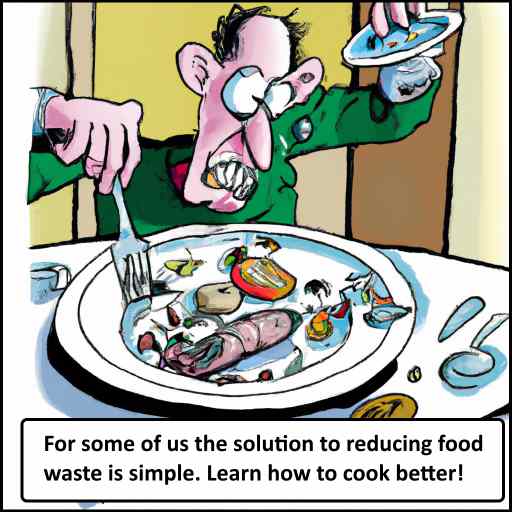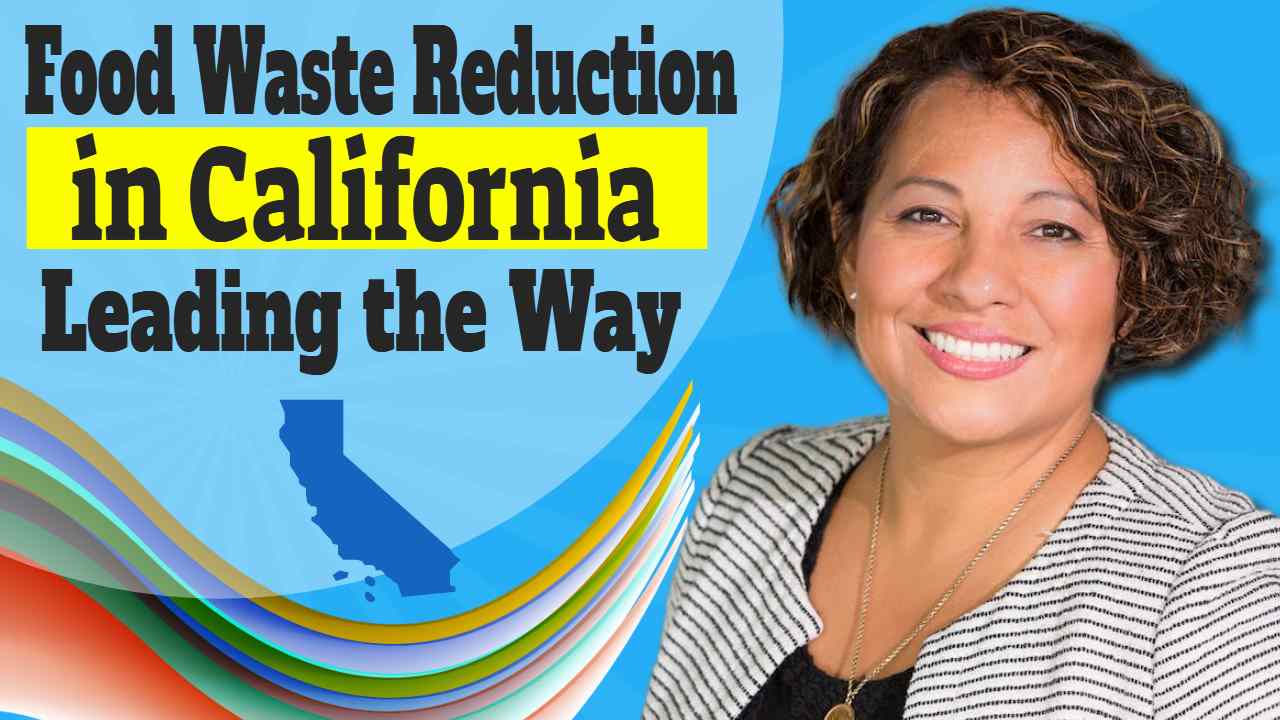One of the most populous states, California is also well-known for its forward-thinking approach to environmental protection. The state has taken many steps in recent years to prevent food waste as officials have realised the environmental and financial consequences connected with it.
Assembly Bill 1826, passed in 2013 by the California State Legislature, mandated that major enterprises in the state dispose of their organic waste at a local recycling or composting facility. Over 4.5 million tonnes of organic garbage have been saved from California landfills thanks to this law.
Comprehensive state-wide initiatives to reduce food waste
There is a comprehensive state-wide initiative to reduce food waste. The goal of this initiative is to raise awareness about the problem of food waste and motivate businesses and individuals to take action to eliminate it. To aid businesses in their efforts to decrease food waste, it offers resources such food waste tracking software, employee training, and technical assistance.
There are also a variety of state-run initiatives designed to increase food donations. By linking food donors with pantries, soup kitchens, and other charities, these programmes help redirect edible food from landfills to those in need.
California Grown Food Waste Reduction Program
The Golden State is also trying to cut down on food waste by making its agricultural infrastructure more effective. Programs like the California Grown Food Waste Reduction Program and the Farm to Fork Food Waste Reduction Program are just two of the many that have been launched by the California Department of Food and Agriculture to cut down on food waste throughout the state.
Actions to promote environmentally friendly food options
 At long last, the state government has allocated funds toward developing environmentally friendly food options. Several studies have been supported by the California Department of Food and Agriculture in an effort to create new food products that have longer shelf lives, less packaging, and other environmentally friendly characteristics.
At long last, the state government has allocated funds toward developing environmentally friendly food options. Several studies have been supported by the California Department of Food and Agriculture in an effort to create new food products that have longer shelf lives, less packaging, and other environmentally friendly characteristics.
These initiatives are making it simpler for low-income Californians to gain access to safe and nutritious food, while also helping to minimise food waste in the state. California's commitment to these programmes is a key factor in making the future more secure for everyone.
Converting Food Waste to Energy in California
In California, food waste is an important issue. It has many social, economic and environmental impacts. One of the most significant is the potential for converting food waste to electrical and thermal energy. This can help protect the environment while also providing for a renewable source of electricity.
Environmental consequences of Wasted Food
Food waste represents a significant environmental concern. It is estimated that up to 1.3 billion tons of food is discarded annually in the United States. While many of these tons of food can be consumed, the remaining is sent to landfills and pollutes the environment. In addition, the discarded food produces methane, a powerful greenhouse gas.
The impact of food waste can be reduced by avoiding unnecessary consumption and cooking methods, product development, marketing, and storage.
For example, restaurants can reduce food waste by offering smaller portions and donating uneaten food to charity. Similarly, grocery stores can offer half-off promotions. Alternatively, school children can experiment with concepts that allow them to make their own meals.
An impact assessment study is used to quantify the environmental effects of food waste. This is done using Life Cycle Assessment (LCA) to estimate the total burden of the avoided food waste at each point of the supply chain. Various assumptions are made in different studies.
Economic consequences
In the United States, food waste costs about $1.5 billion a year. This includes the cost of disposing of the waste. Food waste also contributes to greenhouse gas emissions. It is estimated that the total global footprint of food waste is $700 billion a year.
It is difficult to predict what will happen when we reduce the amount of food we throw away. However, it seems likely that reducing waste will have an impact on the environment. Several countries have developed policies to reduce food waste.
Some of these include limiting organic waste in landfills and mandating composting. Others involve food donation programs. Other policies may involve subsidy policies or improving infrastructure. For instance, Italy provides tax breaks for wise food consumption.
The impacts of reducing food waste vary depending on the size of the problem. For example, a family of four would save $1,760 a year if they were to avoid throwing away food. If the market was reasonable size, the effect would be much bigger.
Social consequences
If California is to meet its climate change targets and avoid further food shortages, it needs to take a look at the social consequences of food waste. The amount of food wasted in the state is nearly six million tons per year. This represents a staggering $370 billion in wasted expenditures.
As the world population grows, so does the pressure on the agricultural sector. Several cities have recognized food waste as an issue and have started programs to address it.
The Food and Agriculture Organization (FAO) of the United Nations is one organization that has studied the environmental and social impacts of food waste. Its report, "From Farm to Kitchen: The Environmental Impacts of U.S. Food Waste," shows that the United States is leading the global production of food waste.
Food waste is an important economic, social, and environmental problem. It has implications for resource exploitation, human nutrition, and sustainable development.
One of the most significant environmental impacts of food waste is the greenhouse gas methane. Methane is 21 times more powerful than carbon dioxide. During the waste phase, methane absorbs infrared radiation, thus warming the earth.
Potential for converting food waste to electrical and thermal energy
As the world's population continues to rise, the need for energy is also growing. One way to address this is through the conversion of waste to energy. An emerging method is anaerobic digestion. This process converts waste into biogas. The gas is then burned for heat and electricity. Several studies have investigated the potential for energy production from this type of process.
Most of these studies are national or state-scale assessments. However, a new study examines the potential for converting food waste to electricity and thermal energy in California.
A four-year National Science Foundation-sponsored study, led by Associate Professor Nicole Berge of Civil and Environmental Engineering at the University of Utah, explores the feasibility of sustainable conversion of wet wastes. It focuses on the role of technology in achieving this goal.
Approximately 133 billion pounds of food are wasted annually in the U.S., one third of the total food produced. Currently, the majority of this waste ends up in landfills, which have high environmental and health concerns. In addition, methane from these materials contributes to global warming. Anaerobic digestion could provide a cleaner alternative to traditional disposal methods.



